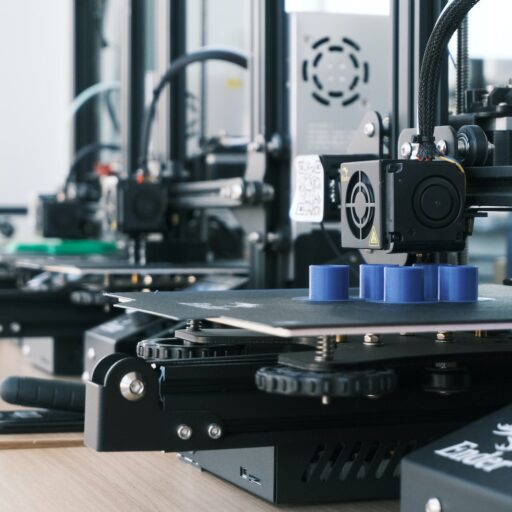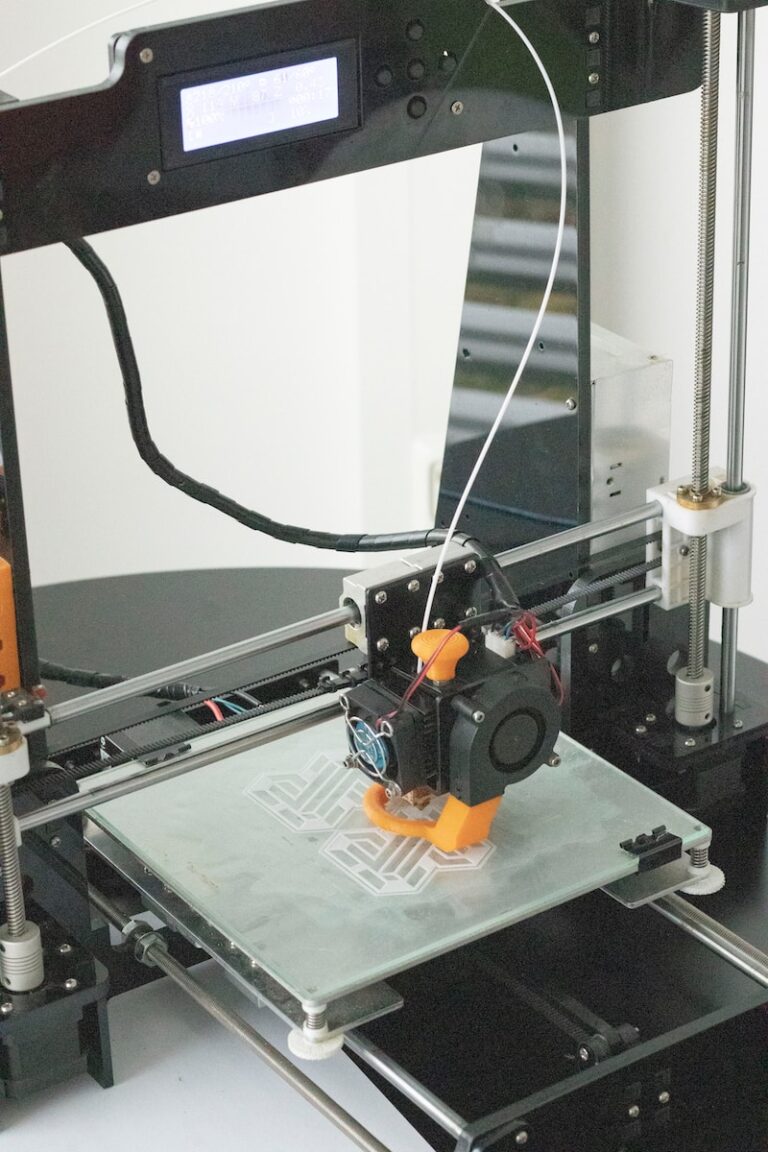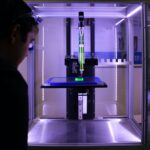Support our educational content for free when you purchase through links on our site. Learn more
How Much Does a 3D Printer Cost in the US? Discover 15 Essential Insights for 2024! 🖨️
Have you ever thought about diving into the fascinating world of 3D printing? 🤔 Picture this: You’re at home, and instead of ordering that custom gadget online, you hit print and—voilà!—it appears right before your eyes. Sounds dreamy, right? But before you get lost in the magic of creation, you might be wondering, how much does a 3D printer cost in the US?
In this comprehensive guide, we’ll unravel the costs associated with 3D printers, from the budget-friendly options for beginners to the high-tech machines used in industrial applications. You’ll discover the 15 essential insights that will help you navigate the price ranges, understand the factors influencing costs, and ultimately make an informed decision about your 3D printing journey. Plus, we’ll share some insider tips on what to look for when choosing the right printer for your needs.
Did you know that the price of 3D printers can range from as low as $200 to over $500,000? 😲 Stick around as we explore the ins and outs of 3D printing costs and help you find the perfect machine for your creative endeavors!
Key Takeaways
- 3D Printer Price Range: Costs can vary significantly, from $200 for entry-level models to $500,000+ for industrial-grade machines.
- Types of Printers: Understanding the difference between FDM, SLA, and SLS technologies is crucial to finding the right printer.
- Cost Considerations: Beyond initial costs, consider material expenses, maintenance, and energy consumption when budgeting for your 3D printing setup.
- Future Trends: Expect advancements in technology to reduce costs and improve accessibility in the coming years.
- Beginner Recommendations: For hobbyists, FDM printers like the Creality Ender 3 or AnkerMake M5 are excellent starting points.
Ready to embark on your 3D printing adventure? 👉 Shop 3D Printers on: Amazon | Walmart | AnkerMake Official and unlock your creativity today!
Table of Contents
- Quick Tips and Facts about 3D Printer Costs
- The Evolution of 3D Printing: A Brief History
- Understanding the Price Range: How Much Does a 3D Printer Cost in the US?
- Cost Breakdown: Factors Influencing 3D Printer Prices
- Types of 3D Printers and Their Costs: A Comprehensive Guide
- 3D Printer Price Comparison by Technology: FDM, SLA, and More
- Cost Per Part: Calculating Your 3D Printing Expenses
- Outsourced Production vs. In-House 3D Printing: Which is Better?
- Considerations Beyond Direct Costs: Maintenance and Materials
- 3D Printing Cost Calculator: Estimating Your Expenses
- The Hidden Costs of 3D Printing: What You Need to Know
- Future Trends in 3D Printing Costs: What to Expect
- Conclusion
- Recommended Links
- FAQ
- Reference Links
Quick Tips and Facts about 3D Printer Costs
🤔 Are you curious about the cost of 3D printing? 🤑 Here are some quick tips and facts to get you started:
- 3D printer prices range from $200 to $500,000+ depending on the technology, materials, and sophistication. 💸
- Fused Deposition Modeling (FDM) printers are the most affordable, with DIY kits starting at $200 and professional models starting at $2,500. 📈
- Stereolithography (SLA) printers are more expensive, with low-cost LCD models starting at $200 and professional models starting at $2,000. 💡
- Selective Laser Sintering (SLS) printers are the most expensive, with industrial models starting at $100,000. 🔥
- Material costs vary significantly depending on the technology and materials used. 📊
- Labor costs also vary depending on the technology and required post-processing. 🕒
The Evolution of 3D Printing: A Brief History

🔙 Let’s take a brief look at the history of 3D printing:
- 1960s: The first 3D printing technologies were developed, including photostereolithography and selective laser sintering. 🔍
- 1980s: The first commercial 3D printing systems were introduced, including stereolithography and fused deposition modeling. 💼
- 1990s: 3D printing became more widely available, with the introduction of affordable DIY kits and open-source software. 📈
- 2000s: 3D printing began to gain mainstream attention, with the introduction of consumer-grade 3D printers and online communities. 🌐
- 2010s: 3D printing became increasingly popular, with the introduction of affordable and user-friendly 3D printers, as well as advancements in materials and technologies. 🔥
Understanding the Price Range: How Much Does a 3D Printer Cost in the US?
💸 So, how much does a 3D printer cost in the US? 🤔
- FDM printers: $200-$10,000+ 📈
- SLA printers: $200-$25,000+ 💡
- SLS printers: $100,000+ 🔥
- Other factors to consider: material costs, labor costs, software and accessories, customer service. 📊
Cost Breakdown: Factors Influencing 3D Printer Prices
📊 Let’s break down the factors that influence 3D printer prices:
- Technology: FDM, SLA, SLS, and other technologies have different price points. 🔍
- Materials: The cost of materials varies significantly depending on the technology and materials used. 📊
- Sophistication: More advanced features and capabilities increase the price. 🔥
- Brand and quality: Reputable brands and high-quality printers come with a higher price tag. 💼
- Software and accessories: Additional costs for software, accessories, and maintenance. 📈
Types of 3D Printers and Their Costs: A Comprehensive Guide
📚 Here’s a comprehensive guide to the different types of 3D printers and their costs:
- FDM printers: $200-$10,000+ 📈
- SLA printers: $200-$25,000+ 💡
- SLS printers: $100,000+ 🔥
- Other types of printers: Binder Jetting, Directed Energy Deposition, Laminated Object Manufacturing, and more. 🔍
3D Printer Price Comparison by Technology: FDM, SLA, and More
📊 Let’s compare the prices of different 3D printing technologies:
| Technology | Price Range |
|---|---|
| FDM | $200-$10,000+ |
| SLA | $200-$25,000+ |
| SLS | $100,000+ |
| Binder Jetting | $1,000-$10,000+ |
| Directed Energy Deposition | $5,000-$50,000+ |
| Laminated Object Manufacturing | $1,000-$10,000+ |
Cost Per Part: Calculating Your 3D Printing Expenses
📊 How do you calculate the cost per part of your 3D printing expenses? 🤔
- Material costs: Calculate the cost of materials used per part. 📊
- Labor costs: Calculate the labor costs per part, including post-processing and assembly. 🕒
- Equipment costs: Calculate the equipment costs per part, including depreciation and maintenance. 📈
- Overhead costs: Calculate the overhead costs per part, including utilities, rent, and insurance. 📊
Outsourced Production vs. In-House 3D Printing: Which is Better?
🤔 Should you outsource your 3D printing production or do it in-house? 🤝
- Outsourced production: Advantages include reduced equipment costs, increased flexibility, and access to specialized expertise. 📈
- In-house 3D printing: Advantages include increased control, reduced lead times, and improved quality. 🔥
Considerations Beyond Direct Costs: Maintenance and Materials
📊 What are the considerations beyond direct costs when it comes to 3D printing? 🤔
- Maintenance: Regular maintenance is necessary to ensure optimal performance and extend the lifespan of your 3D printer. 🔧
- Materials: The cost of materials can vary significantly depending on the technology and materials used. 📊
3D Printing Cost Calculator: Estimating Your Expenses
📊 How do you estimate your 3D printing expenses? 🤔
- Material costs: Calculate the cost of materials used per part. 📊
- Labor costs: Calculate the labor costs per part, including post-processing and assembly. 🕒
- Equipment costs: Calculate the equipment costs per part, including depreciation and maintenance. 📈
- Overhead costs: Calculate the overhead costs per part, including utilities, rent, and insurance. 📊
The Hidden Costs of 3D Printing: What You Need to Know
🔍 What are the hidden costs of 3D printing? 🤔
- Energy consumption: 3D printing can consume a significant amount of energy. 💡
- Waste generation: 3D printing can generate waste, including failed prints and packaging materials. 📦
- Intellectual property: 3D printing can raise intellectual property concerns, including patent and copyright infringement. 📝
Future Trends in 3D Printing Costs: What to Expect
🔮 What are the future trends in 3D printing costs? 🤔
- Advancements in technology: Advancements in technology are expected to reduce costs and improve efficiency. 🔍
- Increased adoption: Increased adoption of 3D printing is expected to drive down costs and improve accessibility. 📈
- New business models: New business models, including subscription-based services and pay-per-part models, are expected to emerge. 📊
Conclusion

In conclusion, the cost of 3D printers in the US can vary dramatically, ranging from $200 for basic DIY kits to over $500,000 for industrial-grade machines. This wide spectrum reflects the diversity of technologies available, including FDM, SLA, and SLS systems, each offering unique benefits and drawbacks.
Positives:
- Versatility: 3D printing can be used across various industries, from prototyping to production.
- Rapid Prototyping: It significantly speeds up design iterations.
- Customizability: You can create tailored solutions that are often impossible with traditional manufacturing.
Negatives:
- Initial Investment: High upfront costs for professional and industrial printers can be a barrier.
- Material Costs: Ongoing material costs can add up, especially for high-quality prints.
- Maintenance: Regular upkeep is required to ensure optimal performance.
With these considerations in mind, we confidently recommend investing in a FDM or SLA printer for hobbyists and small businesses looking to explore 3D printing. For more serious applications, consider a professional or industrial printer to maximize efficiency and quality.
Now that we’ve covered the costs, types, and considerations of 3D printing, you should have a clearer understanding of what to expect. Whether you’re a hobbyist or a business looking to innovate, there’s a 3D printer out there that fits your needs! 🎉
Recommended Links
- 👉 Shop 3D Printers on: Amazon | Walmart | AnkerMake Official
- Books on 3D Printing:
FAQ

How much do 3D printers normally cost?
3D printers typically range from $200 for entry-level models to $500,000+ for industrial systems. Most hobbyist printers fall in the $500 to $1,500 range, while professional-grade printers can start at $2,500 and go up.
Are 3D printers costly to run?
The running costs of 3D printers can vary based on several factors, including the type of printer, the materials used, and the frequency of use. Generally, material costs (filaments for FDM, resins for SLA) and electricity consumption are the main ongoing expenses. While they are not excessively high, they can accumulate over time.
Read more about “Unveiling the Cost of Quality 3D Printing in 2024: A Comprehensive Guide”
Is it expensive to 3D print at home?
The expense of 3D printing at home largely depends on the printer you choose and the materials you use. Entry-level printers can be quite affordable, but higher-end models may require a significant investment. Additionally, the cost of materials and maintenance must be factored in.
Read more about “13 Reasons Why You Should Buy a 3D Printer for Home Use …”
What is the average price for a personal as well as commercial 3D printer?
For personal use, average prices range from $200 to $1,500. For commercial applications, the average price can be between $2,500 and $10,000, depending on the required capabilities and technology.
What are the best 3D printers for beginners?
Beginners should consider FDM printers like the Creality Ender 3 or AnkerMake M5. These models are user-friendly, affordable, and have strong community support for troubleshooting and upgrades.
Read more about “3D Printing for Beginners: Is It Really as Easy as 1, 2, 3? … 🖨️”
What should I look for when buying a 3D printer?
When purchasing a 3D printer, consider factors such as:
- Print Quality: Look for printers with good resolution and reliability.
- Build Volume: Ensure the printer can handle the size of your projects.
- Material Compatibility: Check which materials the printer can use.
- Community and Support: A strong user community can be invaluable for troubleshooting.
Read more about “What 3D Printer Has the Least Problems? Discover the Top 5 Picks for 2024! 🖨️✨”



